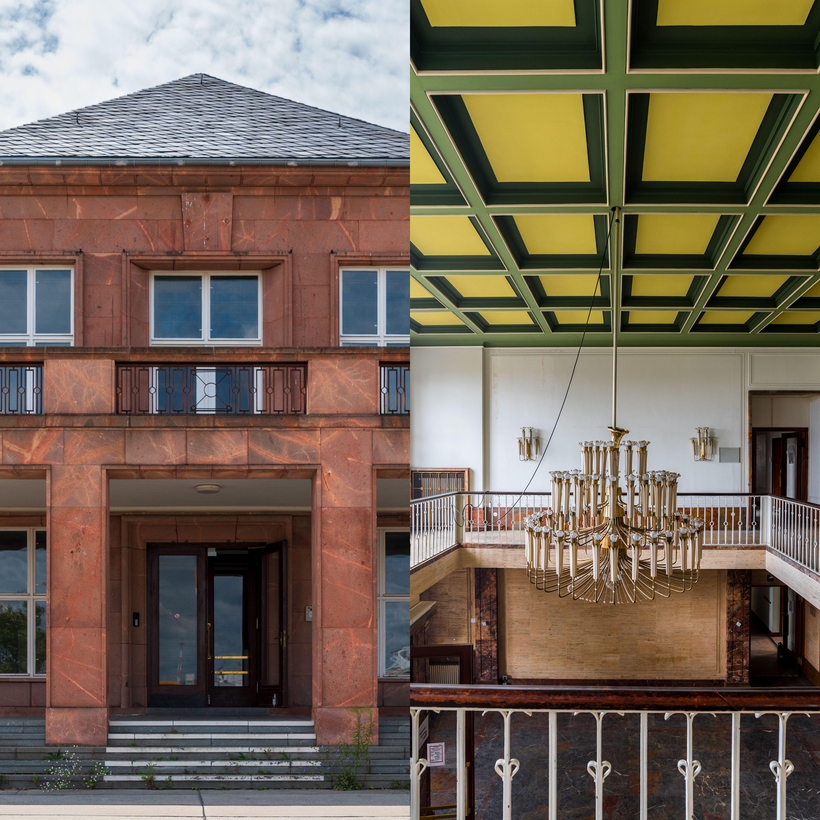Forlorn and the worse for wear, as if sensing its fate, the Generalshotel stands incongruously against the backdrop of Berlin’s new airport, gleaming in the distance. It’s clearly in the way of progress.
This, though, is a city with a habit of squandering its Cold War relics. The Wall has disappeared, apart from a few stretches, including the “East Side Gallery”, now sadly diminished by the voracious appetites of property developers.

This is a point further illustrated by anyone who tries to see the last watchtower on what was the “death strip” of the no man’s land that once divided the city. It’s now obscured by a construction site.
The Palace of the Republic, meanwhile, with its bronze-mirrored façade, home to the rubber-stamp East German parliament, has been replaced by a sterile replica of the Prussian royal city palace that once stood there. A palatial Stalinist college campus is festering in woods outside Berlin, strictly out of bounds. The city’s biggest statue of Lenin was cut into 129 pieces and buried in a wood. His 3.86-ton head, at least, was exhumed in 2015 and placed in an exhibition of toxic monuments.

And so we find ourselves walking up the pillared steps of the Generalshotel, the grand Soviet-era airport building that welcomed VIPs to East Berlin. Here, perhaps for the last time, it is possible to get a sense of the postwar era of Soviet pride and power, of East German apparatchiks straightening their ties as they waited nervously for their bosses from Moscow.
We enter a hall adorned with red marble, a huge chandelier and a green and yellow coffered ceiling. This gateway to the eastern bloc is a tired place, but still evokes the spirit of the age of Fidel Castro, Josip Broz Tito, Leonid Brezhnev, Yuri Gagarin and Helmut Schmidt, who all walked through here.

The lobby is pure socialist realism, recalling Moscow underground stations. No one, it seems, doubts the historic value of the Generalshotel — it was placed under monument protection in the year 2000. But even that isn’t enough to save it.
Berlin’s biggest statue of Lenin was cut into 129 pieces and buried in a wood. His 3.86-ton head, at least, was exhumed in 2015 and placed in an exhibition of toxic monuments.
Despite protests from politicians, historians and architects, who say a piece of East German identity is being wiped out, wrecking crews will come for the Generalshotel in September.

Dietmar Woidke, prime minister of the state of Brandenburg, which surrounds Berlin, said the demolition of the Generalshotel reflected western “arrogance and ignorance” about East German history and could worsen the “difficult mood” among easterners — a veiled reference to the surge in support for the hard right here.
Commissioned by the Soviet military administration to cater for top brass flying into Berlin, it was designed by the German architect Georg Hell and completed in 1950. It was handed to the East German government in 1961. After the collapse of communism the border police used it for the less glamorous purpose of detaining people awaiting deportation.

The building stands inside the perimeter of Berlin’s new airport, and the decision to raze it was taken in 2011 to make way for a new terminal for government jets. But the wheels grind slowly: the airport itself opened almost a decade behind schedule in 2020. The plans for the terminal have since been scrapped. But the Generalshotel still needs to go because the space is needed for government jets, officials say.
In recent weeks, various ministries have denied responsibility for the demolition. A last-minute reprieve cannot be ruled out, but there is no sign of it yet. “You were the last,” an official says as we are ushered out. Another one bites the dust.
David Crossland is a Berlin-based journalist

